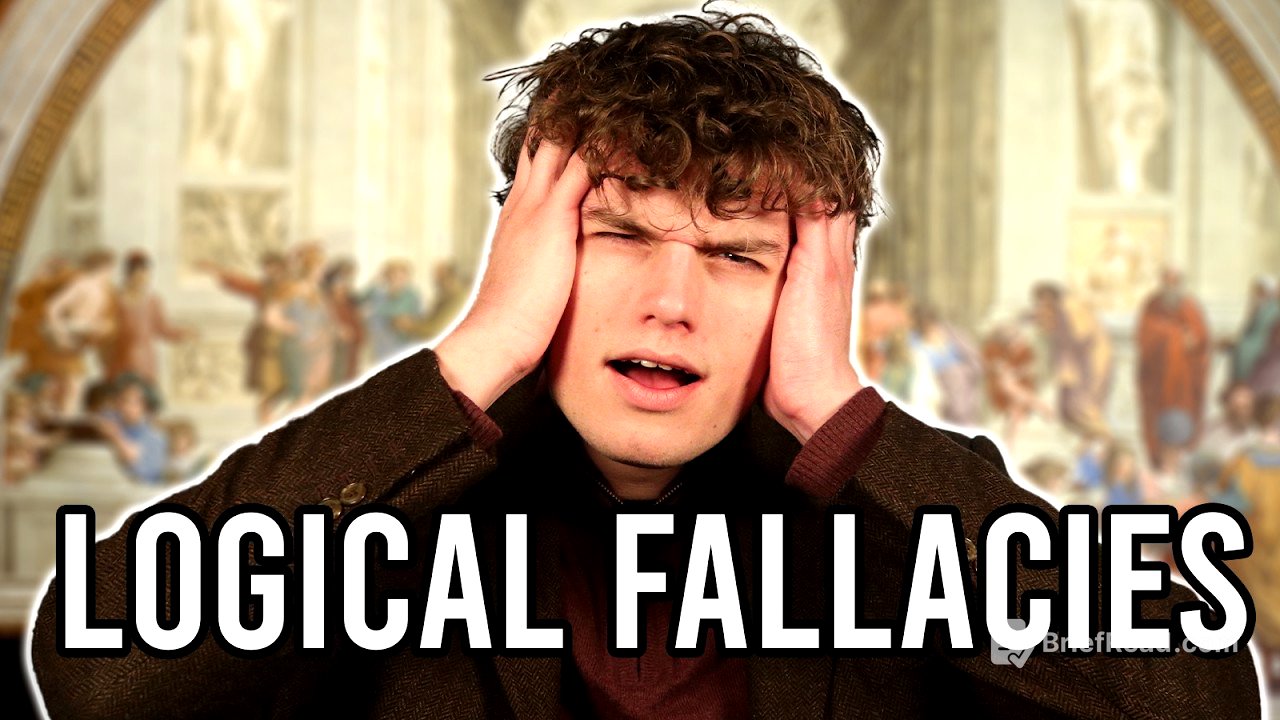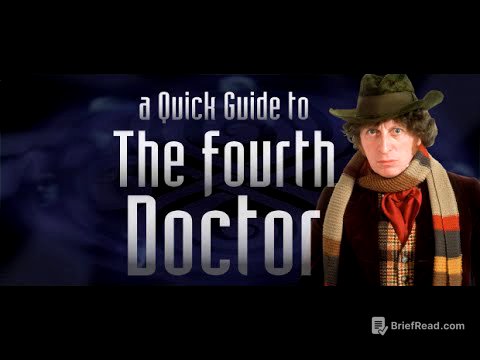TLDR;
This video proposes a framework for understanding logical fallacies beyond simple identification. It categorizes fallacies, explains why they are poor arguments, and provides methods for spotting weak debating even without naming the specific fallacy. The video covers formal approaches using logical structures, informal approaches analyzing the rules of argumentation, and the importance of context in evaluating fallacies. It concludes by suggesting a series of questions to evaluate arguments and extract useful information, even from flawed ones.
- Logical fallacies are categorized and analyzed to understand why they result in poor arguments.
- The framework moves beyond identifying fallacies to understanding the underlying issues in argumentation.
- Contextual factors and the intent of the arguer are crucial in determining if an argument is fallacious.
- A series of questions are proposed to evaluate arguments and extract useful information, even from flawed ones.
Logical Difficulties [0:00]
The video introduces the concept of logical fallacies and aims to go beyond simply identifying them. Instead, it seeks to explain why these fallacies make for poor arguments and to provide a framework for spotting bad debating, even when the specific fallacy cannot be named. The approach involves breaking down fallacies into types and building upon a framework for personal use. This video serves as a sequel to a previous video on logical fallacies, covering some of the same material while introducing new concepts. The goal is to move away from relying on named fallacy labels altogether.
Formal Approaches [2:38]
Formal logic is a language used to determine which premises imply which conclusions. A valid argument structure ensures that if the premises are true, the conclusion cannot be false. Classical logic dictates that any statement must be either true or false, while three-valued logics allow for a third option, such as "not sure." Fallacies of form occur when an argument uses an invalid structure, such as denying the antecedent. The fallacy of composition involves inferring properties of a whole from properties of its parts, which can sometimes lead to correct conclusions but is not always reliable. Just because an argument is fallacious does not mean the conclusion is definitely false. Validity is a high bar, requiring that there is no possibility of a false conclusion if the premises are true.
The Argument Game [13:52]
Ludwig Wittgenstein's analysis of language focuses on what language does and the purposes it serves, calling these purposeful uses "language games." These games have rules and expectations, similar to how chess has appropriate and inappropriate moves. Logical fallacies not captured by formal logic can be examined by asking what the rules of the argumentative language game are and whether these fallacies break them. Douglas Walton suggests that in a standard argument, each person aims to persuade the other while also seeking the truth. The implicit rules assume genuine intent to persuade and understand disagreements. Examples of these rules include arguing against the opponent's commitments, honestly representing commitments, answering reasonable questions, and appealing to the opponent's reason.
Contextual Fallacies [21:53]
Whether an appeal to pity is fallacious depends on whether the pity is warranted, which is highly dependent on context. Similarly, the ad hominem attack is only fallacious if the person's character is not pertinent to the issue. Conclusions can be argued for at different strengths, affecting whether an argument is fallacious. Appeals to authority, slippery slope arguments, and appeals to popular opinion are all highly dependent on context. The argumentum ad baculum, or argument from force, depends on philosophical beliefs about what is right and wrong. Identifying fallacies requires practical wisdom, incorporating formal logic, context, and the implicit rules of persuasion.
Beyond Logic and Fallacies [29:55]
The "fallacy fallacy" involves dismissing an argument and its conclusion simply because a logical fallacy is identified. Instead, one should consider what useful information the fallacious reasoning still contains. It's important to ask what the justified warrant of the fallacious argument is and what it actually implies. This approach involves a principle of charity, steelmanning the opponent's position. Additionally, one can ask what it would take for the opponent to be correct. A different approach involves asking a series of questions to evaluate arguments: Is the argument valid? Are there any obviously unsound premises? Is the arguer acting in good faith? With what strength is the conclusion being argued? What level of strength do the premises actually give to the conclusion? What have the opponent's premises shown, regardless of their intention? Under what circumstances would the opponent's argument be correct?







![Low Deep T - Casablanca [Official Video HD]](https://wm-img.halpindev.com/p-briefread_c-10_b-10/urlb/aHR0cDovL2ltZy55b3V0dWJlLmNvbS92aS9iZWJaWjdRMndDZy9ocWRlZmF1bHQuanBn.jpg)
![Incestuous fig wasps: death in paradise [HD]](https://wm-img.halpindev.com/p-briefread_c-10_b-10/urlb/aHR0cDovL2ltZy55b3V0dWJlLmNvbS92aS9CZzczeC1pd0lBWS9ocWRlZmF1bHQuanBn.jpg)
